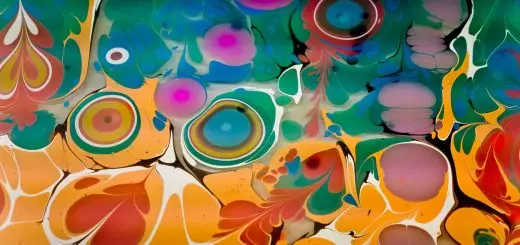Sacred Geometry in Art and Design

Looking for more amazing products? Check out our online store and explore our collection here! Happy shopping!
Before diving in, please note: This post is for informational purposes only. If you’d like to know more about how we approach topics, feel free to check out our friendly Disclaimer Page.
Hey there, amazing readers! 
We’re committed to delivering quality posts, and your support (even just sticking around despite the ads) means everything to us. So, bear with us, and thanks for helping us keep the good vibes rolling. Now, on to the fun stuff!
TRANSLATE BUTTON AT THE END OF THE ARTICLE
Introduction to Sacred Geometry
Sacred Geometry is a fascinating and ancient field that explores the mathematical principles that underpin the creation of the universe.
It involves the study of geometric shapes, patterns, and ratios that are believed to hold symbolic and spiritual significance.
These geometric forms can be found in art, architecture, and design across various cultures throughout history.
Understanding sacred geometry allows us to appreciate the interconnectedness of all things and the underlying order in the universe.
Historical Significance of Sacred Geometry
The use of sacred geometry dates back to ancient civilizations such as the Egyptians, Greeks, and Mayans.
These cultures believed that certain geometric shapes held mystical properties and were inherently linked to the divine.
For example, the Egyptians used the golden ratio in the design of the Great Pyramid of Giza, while the Greeks incorporated the Fibonacci sequence in their architecture and art.
The Mayans also revered geometric patterns such as the Flower of Life and the Tree of Life in their religious ceremonies and artwork.
The Role of Sacred Geometry in Art
In art, sacred geometry serves as a powerful tool for creating visually harmonious and spiritually resonant compositions.
Artists often use geometric shapes and patterns to convey deeper symbolic meanings and evoke a sense of order and balance in their work.
By incorporating sacred geometry into their art, creators can tap into universal principles that transcend cultural boundaries and speak to the interconnectedness of all living beings.
Utilizing Sacred Geometry in Design
Designers also harness the power of sacred geometry to create aesthetically pleasing and energetically balanced spaces.
By applying geometric principles such as the golden ratio, Fibonacci sequence, and fractal patterns, designers can enhance the flow of energy within a space and create a sense of harmony and coherence.
Whether in interior design, fashion, or product design, incorporating sacred geometry can elevate the overall aesthetic and imbue the design with a sense of sacredness.
Symbolism in Sacred Geometry
Each geometric shape and pattern in sacred geometry carries its own unique symbolic meaning.
For example, the circle represents unity and infinity, the triangle symbolizes balance and stability, and the spiral signifies growth and evolution.
By understanding the symbolism behind these shapes, artists and designers can infuse their work with deeper layers of meaning and significance, connecting with viewers on a profound level.
Sacred Geometry Patterns in Nature
One of the most compelling aspects of sacred geometry is its prevalence in the natural world.
From the spirals of seashells to the hexagonal patterns of snowflakes, geometric shapes and ratios can be found everywhere in nature.
This inherent connection between geometry and the natural world reinforces the idea that the universe is governed by mathematical principles and that all living beings are interconnected through these universal patterns.
Applying Sacred Geometry in Architecture
In architecture, sacred geometry has been used for centuries to design sacred spaces such as temples, cathedrals, and mosques.
By incorporating geometric shapes and ratios into the design of these structures, architects create spaces that inspire awe, reverence, and a sense of transcendence.
The use of sacred geometry in architecture not only enhances the aesthetic appeal of a building but also imbues it with a spiritual quality that resonates with visitors on a deep level.
Mathematical Principles of Sacred Geometry
At the core of sacred geometry are mathematical principles such as the golden ratio, Fibonacci sequence, and fractal geometry.
These principles govern the proportions and relationships between geometric shapes, creating a sense of balance and harmony in the design.
By applying these mathematical concepts, artists and designers can create visually stunning and emotionally resonant works that speak to the universal order of the cosmos.
Examples of Sacred Geometry in Ancient Cultures
Ancient cultures around the world have left behind a rich legacy of sacred geometry in their art, architecture, and religious practices.
For instance, the Islamic art of the Middle East features intricate geometric patterns that symbolize the infinite nature of God.
In Hindu temples in India, mandalas and yantras are used to represent the cosmic order and the interconnectedness of all things.
The ancient Chinese also incorporated sacred geometry into their architecture, with the design of the Forbidden City based on geometric principles of balance and harmony.
Understand the Powerful Law of Karma and Its Impact – Explore Here!
Contemporary Use of Sacred Geometry
In modern times, sacred geometry continues to inspire artists, designers, and architects to create innovative and spiritually resonant works.
Contemporary artists such as Keith Critchlow and Alex Grey draw upon sacred geometric principles in their art to explore the interconnectedness of the cosmos and the human experience.
Designers use sacred geometry to create sustainable and harmonious spaces that promote well-being and vitality.
The enduring appeal of sacred geometry lies in its ability to transcend time and culture, speaking to a universal truth that resonates with people from all walks of life.
Benefits of Incorporating Sacred Geometry
Incorporating sacred geometry into art and design offers a myriad of benefits, both aesthetic and spiritual.
By aligning designs with universal geometric principles, creators can create visually pleasing and harmonious compositions that resonate with viewers on a deep level.
Sacred geometry also provides a framework for creating energetically balanced and spiritually uplifting spaces that promote well-being and connectivity.
By tapping into the timeless wisdom of sacred geometry, artists and designers can infuse their work with a sense of sacredness and unity that transcends cultural boundaries.
Challenges in Implementing Sacred Geometry in Art and Design
While sacred geometry offers numerous benefits to artists and designers, there are also challenges associated with its implementation.
One of the main challenges is striking a balance between incorporating sacred geometry into the design while maintaining creativity and artistic freedom.
It can be easy for creators to become too rigid in their adherence to geometric principles, stifling their creative expression.
Another challenge is ensuring that the symbolism and meaning behind the geometric shapes resonate with the intended audience, as different cultures may interpret symbols differently.
Despite these challenges, the beauty and power of sacred geometry make it a valuable tool for artists and designers seeking to create works that resonate with a deeper truth and universal harmony.
Conclusion
Sacred geometry is a profound and timeless field that has captivated artists, designers, and architects for centuries.
By exploring the mathematical principles that underpin the creation of the universe, creators can tap into a wellspring of inspiration and creativity that transcends cultural boundaries.
Incorporating sacred geometry into art and design allows for the creation of visually stunning and spiritually resonant works that speak to the interconnectedness of all things.
Despite the challenges associated with implementing sacred geometry, the benefits far outweigh the difficulties, offering creators a powerful tool for creating works that resonate with viewers on a profound and universal level.

The Enlightenment Journey is a remarkable collection of writings authored by a distinguished group of experts in the fields of spirituality, new age, and esoteric knowledge.
This anthology features a diverse assembly of well-experienced authors who bring their profound insights and credible perspectives to the forefront.
Each contributor possesses a wealth of knowledge and wisdom, making them authorities in their respective domains.
Together, they offer readers a transformative journey into the realms of spiritual growth, self-discovery, and esoteric enlightenment.
The Enlightenment Journey is a testament to the collective expertise of these luminaries, providing readers with a rich tapestry of ideas and information to illuminate their spiritual path.
Our Diverse Expertise
While our primary focus is on spirituality and esotericism, we are equally passionate about exploring a wide range of other topics and niches 

To ensure we provide the most accurate and valuable insights, we collaborate with trusted experts in their respective domains 
Our blog originally focused on spirituality and metaphysics, but we’ve since expanded to cover a wide range of niches. Don’t worry—we continue to publish a lot of articles on spirituality! Frequently visit our blog to explore our diverse content and stay tuned for more insightful reads.
Hey there, amazing reader! 
Check out our store here and take a peek at some of our featured products below! Thanks for being awesome!












